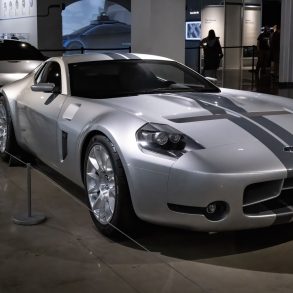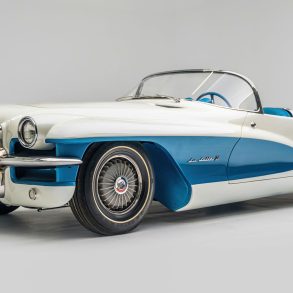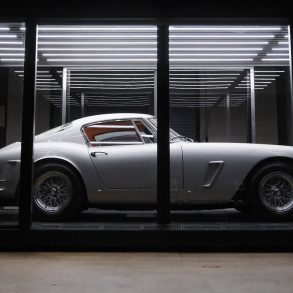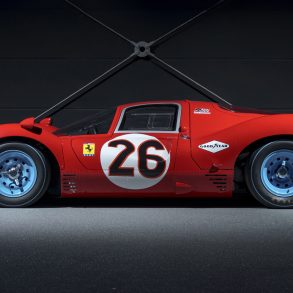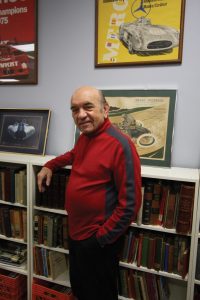
VR: How does an accomplished neurosurgeon become such an accomplished car guy?
FS: Both of those things relate to my Dad, and my relationship with my Dad. He was a general practitioner who worked his way through medical school fixing cars. When I was a boy, we would go on housecalls together, and sometimes we would go to junk yards, because in the ’50s and ’60s there were still some interesting pre-World War Two cars in the junkyards. Then there were always car books around the house. He was just a guy who made cars seem to be important, and he certainly did make medicine seem to be important. The cars were always a hobby for him, and they ultimately became a passion. That’s how it evolved.
VR: What car was the beginning of your collection?
FS: I was bugging my Dad mercilessly about driving when I was 15, and I am sure he wanted to keep me off the road. He bought me an Alfa Romeo for $700 that was a disaster. It was a 2500 Alfa, which nowadays is an interesting car. It was cobbled together. It took me about a year and a half to get it fixed, and it was never right. It was bad. I would get stranded with it. It would be 2 a.m. in the Poconos, with no lights on the road, with a very irate girl, and a dead car that nobody could fix because no one knew what an Alfa Romeo was. So I had a love-hate relationship with it, and I deliberately ignored it until I opened the museum—really. We had a garage, and I just left it there. Finally, my curator said, “Now your car is ‘camp,’” so we put it in the museum.
“I often say that racing a car—a historic car beyond a certain point—is just selfishly taking it away from future generations to enjoy.”
VR: How do you decide on a car to add to the collection?
FS: That’s easy. First of all, history. Anybody who collects an antiquity has to be aware of history. If you want to race, and you’re not aware of the provenance of your racecar, you should just buy a new car and race it. Because, what are you doing ruining an old car? In fact, you should not even race an old car with potential of hurting it. It would be like if you owned a fine painting—a good Impressionist or serious Old Master —and you didn’t know who Caravaggio was, you’re just a jerk! So, it has to be history. You can’t collect everything. My friends try to do that, and they have museums that are either hard to follow or which skim the surface lightly. I wanted to focus on what I thought was the most interesting. First of all, they had to be winners. [With] a polyglot collection, [it] is hard to weave into a story. So I picked out what I thought was the most interesting, which was racing and sports cars. Sports cars of almost any era are beautiful, interesting, or exciting. Until you get to the ground-effects cars, which is why we stopped in the mid-’70s. So, it’s got to be a winner and be part of the theme, which is racing sports cars. Then, as the book (The Stewardship of Historically Important Automobiles) says, the car is worthless without its provenance—it has to have provenance. It has to have most of its original bits. We only have one car in here that doesn’t have its original engine. All of them have original bodies. You can’t collect every Lola and every Lotus, even every Porsche. When they decided to play with the big boys, which was with the 917, then they started to get interesting to me. That’s a very long answer to your question, but it’s a difficult question because I’ve narrowed it down to 65 cars, and most of them are not disposable for the theme of the collection.

VR: Are there cars that you’re still seeking?
FS: There are a few cars I’m still seeking because they fit a niche in the collection. Recognizing that it starts from the beginning, and I try to focus on American cars—but as I’ve said, and this was printed in a British motoring magazine—writing about American sports cars is like writing about British cooks. I’ve tried to squeeze out the important ones, Shelby Daytona Coupe, GT 40, and, even going back in time, the Supercharged Stutz that almost won Le Mans and, of course, the Duesenberg that did win Le Mans in 1921. So those are the handful of great American cars; the rest of them that reached that level are European. I can’t think of any American cars that are at the level of the rest of the cars, because after 1969 we basically dropped out of sports car racing. Ferrari, however, was always in it, and I always lusted for the first Ferrari that made a significant difference—the Touring Barchetta. I can not find one that’s not re-bodied, re-engined, or unattainable. The other car, at the other end of that spectrum, is one of the rear-engined Ferraris that was significant. The 275 LM would be my first choice, but then when you get into the 312/512, you still have driveable cars. The other car of the vintage era is one that got away—the SSK Mercedes. That is the car that got away. I was the under-bidder—it was a fabulous car—I was in the middle of an operation, so I couldn’t go to the auction.
I should ask you, what do you think fits the theme?
VR: I think the Ferraris are the ones. But as you were talking, I thought about the recent Peugeots and Audis, but they seem too new.
FS: In any collection, they’re statues, unless you take them to a race track. Quite frankly, I often say that racing a car—a historic car beyond a certain point—is just selfishly taking it away from future generations to enjoy. I have a list of cars—we know about the vintage Monaco Grand Prix, where a 312 Ferrari was just totaled. And Jim Clark’s Lotus was destroyed. I once said if that’s the kind of collector you are, like a wine collector who consumes his collection as he uses it, you consume your cars. Now that’s very, very unpopular, and when I go out, I hear, “They should be driven, like they were meant to be driven.” Well, they weren’t meant to be driven for 120 years.
VR: And I suspect that’s why you have a foundation.
FS: Absolutely, I have a wonderful daughter who has no interest in any inheritance. The only way to keep it together is to give it away. By giving it away, now I’m running a business that I am having difficulty running on my pension because there’s no way we have enough income to pay all the salaries, the electricity, etc. So, it’s a constant struggle. I’ve gotten almost no charity, and I understand—people won’t give to this rich guy’s car collection, even though you’ve given it away and created a foundation. So we have events here; events will give us $2-3,000, and that’s how we struggle to stay alive. The question was “why a foundation,” and the answer is to keep the collection together. And it gives me something to do. I had a busy life, so I’m here six days a week.
VR: You also have bi-monthly “demonstration days” and hoods-open days at the museum. Is that to make the collection more relevant to the public?
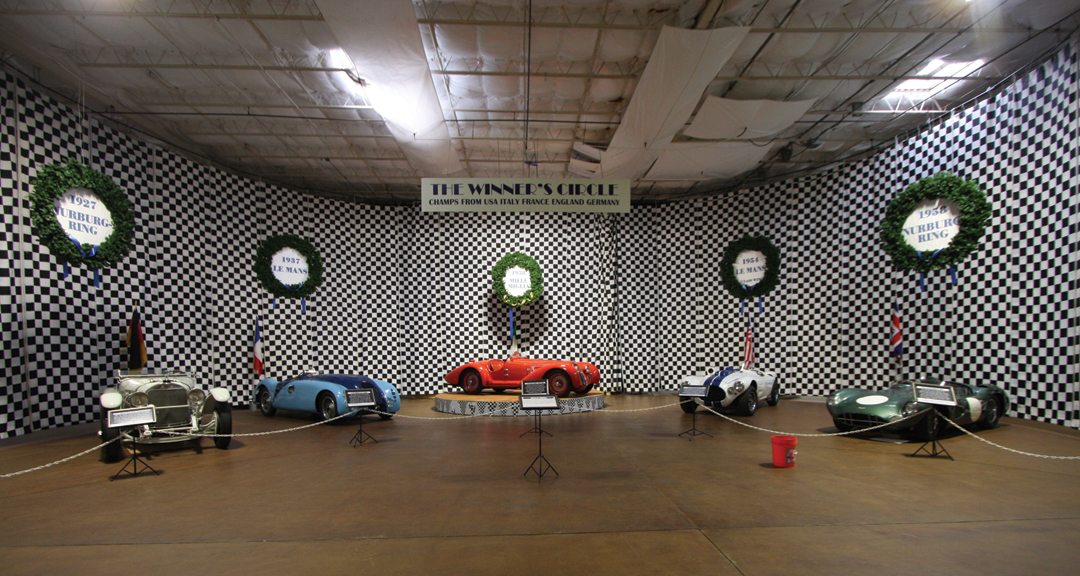
FS: Yes, it’s to make it more relevant, to get more exposure and get more people to come. You want to get people to come back again—if you’re here once, why should you come back again? You’ve got to think about it, if you gave this away, what would your reward be if you’re going to get a reward? If you’re not going to get a monetary reward, your reward is that people are going to get the same amount of pleasure out of it that you do. The reward is to have people learn and to know about the cars.
VR: Are there cars in the collection that you won’t drive?
FS: No. There’s one I haven’t driven because it’s so really complicated—the 1975 [Alfa Romeo] 33TT12. It uses very special fuel, and it’s a racecar. The 917, we can drive back there (the Demonstration Days are held on a paved area behind the museum), but that’s just a racecar; it’s beyond my skill to drive it. We will eventually take it to a track and drive it. But the answer is no, we drive them all.
VR: You have an extensive library of automotive materials. How did that start and how do you find the materials?
FS: I grew up in a very poor part of town. The library is why I can talk about unusual cars. The library is important. When I heard about a Bugatti “Tank” in France—this was in the ’80s—and everyone would ask what’s a Bugatti “Tank?” I knew what it was, then I heard it was available. I knew a Frenchman who wanted my Ferrari Barchetta, and I told him that I wanted him to go to his friend, who was disposing of his collection, and that I will trade you my 8,000-mile beautiful Ferrari for his “Tank.” So, I got a tax free trade. Now the thing is an icon—Bugatti has replicated it. They came over from Germany just to match the colors. So, the library is how you tell what’s important and get it right.
VR: Have you been working on the library since you were very young?
FS: Yes, and I never stopped it—even when I was out at Mayo Clinic training, I collected books out there. My first job was at Harvard Medical School; I haunted the bookstores—there were some nice old bookstores. I went up to Springfield and met the widow of the guy who designed the Lozier car, which was a great American car, and I got his estate books. I never stopped it. I was always wheeling and dealing. The library is the key. The worst thing that collectors have…they don’t know the history well. They rely on other people, and when you rely on other people, they’re usually dealers, and dealers are more interested in making a deal than anything else. And, as I say in the book (The Stewardship of Historically Important Automobiles), if you can’t do it yourself, you’re like the guy who bought the Picasso in the local thrift shop at a bargain price. Then he finds out that it’s not a Picasso, so who’s the jerk here? Certainly the guy who lied is a jerk, but the guy who bought it without doing a proper provenential workup is a jerk also.
VR: After reading your book, The Spirit of Competition, about the collection, I think I mentioned to you that it was one of the few books I’ve read that caused me to use a dictionary. Do you have fun using words such as absquatulated, erumpent and kickshaw?
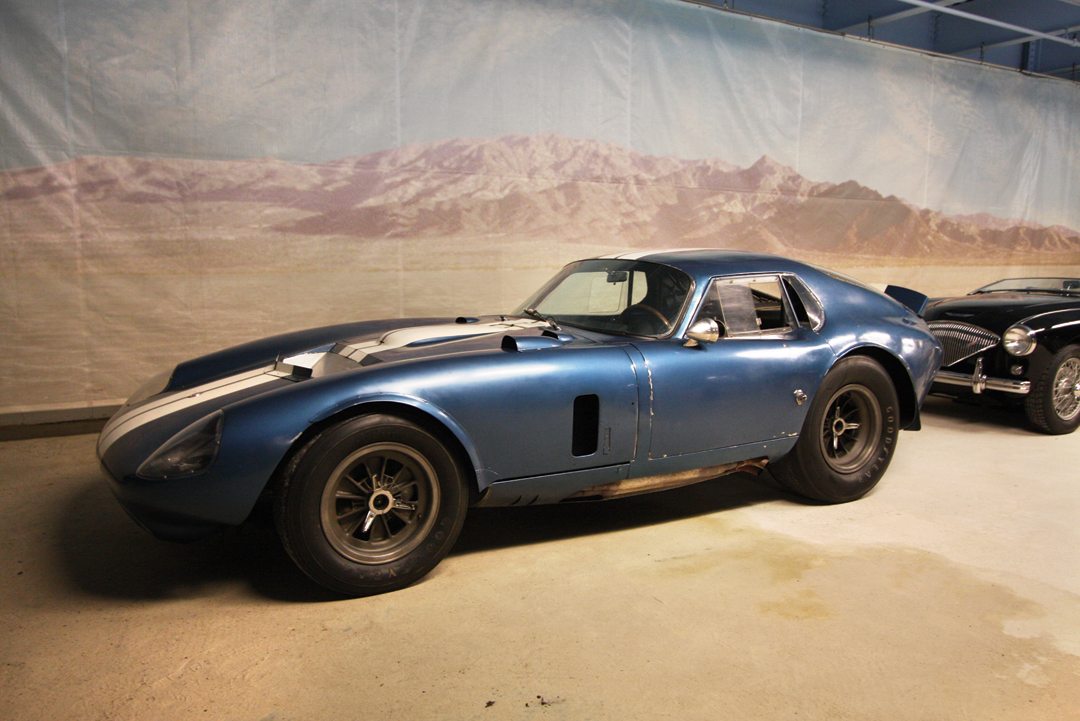
FS: Strictly for fun. It’s to show (the reader) that we’re having a good time here; don’t take this too seriously. But all the facts are serious, and the images are serious. They’re just fun words, but the idea was to have a good time and to get the people to run to the library and have a break when going from one car to another. One thing I did in there that turned out to be popular—I’ve never seen it in another car book—is that virtually every car has a contemporary, not a modern, but a contemporary road test from a magazine. The reason we could do that is because most of the cars were road testable. And with the library, I could find a Motor Sport or an Autocar or even a Road & Track that had a contemporary road test. I think that’s important, because what bothers me the most now is you get a modern writer, and he’ll either say how wonderful it is because he can get it into gear, or he’ll say how primitive it is because he doesn’t know what cars were like in 1912. He’ll drive a Mercer Raceabout and couldn’t find out what all the fuss was about—the brakes were bad, it was hard on cornering, it has a different kind of shifting pattern, and it’s not easy to shift. So, why do they make such a fuss about a Mercer Raceabout? If he drove any other three-speed transmission car from 1913, and I mean any other, the Mercer was like a dream because it was light, it had a wide tread, it had a low center of gravity, it had a four-speed transmission when virtually everybody else had three-speeds. It’s just a dream, but a modern driver can’t do that; only a driver who drove it at the time can. So that’s why we have so many contemporary road tests in there.
VR: In the introduction to your book, The Stewardship of Historically Important Automobiles, you talk about those you might offend by your argument for preservation rather than restoration. The last sentence is “…whether in this generation of collectors where it is already starting, or in future generations who respect historic automobiles perhaps even more than we do, those offended will be replaced by appreciative automotive historians who preserve their cars independent of criteria other than stock original.” Are we getting there?
FS: It has rapidly changed—not just the past decade, but I would say the last two years. Changed so dramatically—perfect example: David Gooding was here last Friday, he spent all day here. At his auction, there was a ratty, unrestored Gullwing and a fully restored Gullwing, and the ratty one brought more. It is definitely happening. People are starting to get the idea that originality is important.
VR: What about a car that has been significantly modified from original during its history? Is it OK to take it back to its original form even if that requires the use of non-original materials, paint and parts?
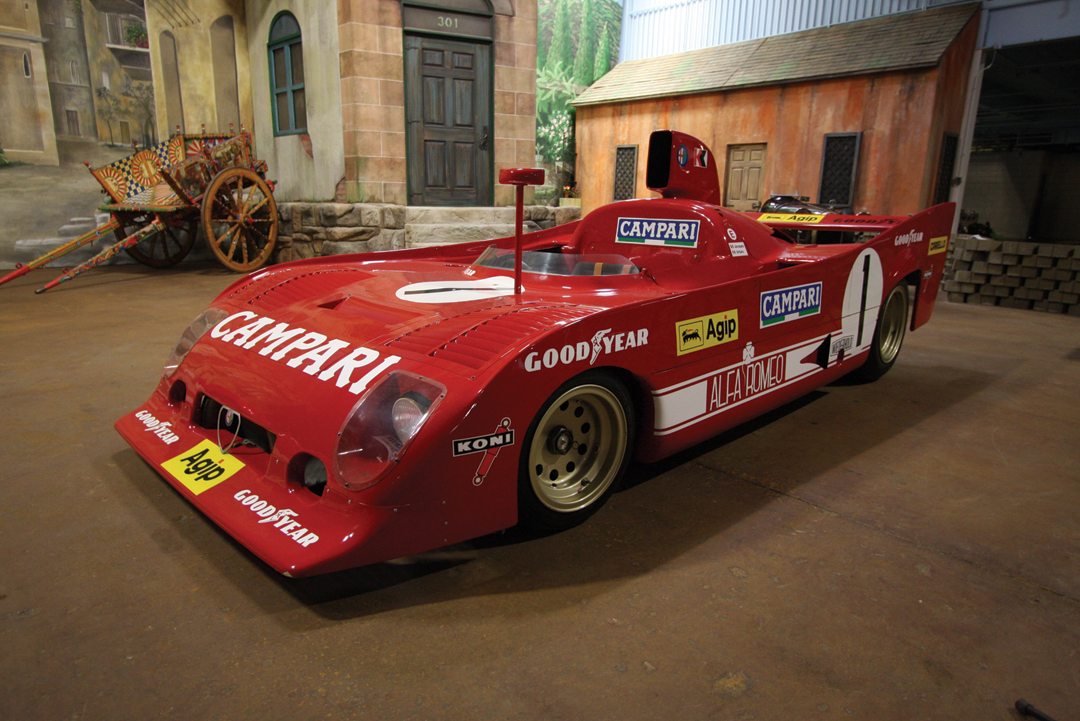
FS: It will never be an original car. But as long as you describe it accurately—you could call it a replica or a “bitsa”—as long as you describe it accurately, it has value for what it is. It would never make my collection, but it would make other people’s collections. And it has a place, so all you have to do is mention it. I don’t think they should be discarded if they’re not original, they just have to be explained.
VR: In a chapter in the book written by Leigh and Leslie Keno, they say “Perfectionism is not the goal here since these pieces [of furniture]—just like automobiles are not meant to be perfect after years and years of use.” Comments?
FS: Absolutely right. If it shows evidence of use, it has part of its history written into its fabric. There are two (award) categories for preservation at Pebble Beach. There’s the one from Pebble, and then FIVA (Fédération Internationale des Véhicules Anciens) has one, but they won’t give it to an unused car. In other words, if your car sat in this museum for its whole life and has never been used, it can’t get the FIVA award.
VR: In your book, a conservation team is mentioned. Do you have one?
FS: We’ve had to develop it ourselves, because you can’t go to the Yellow Pages and look for a conservation guy. We developed our own criteria, and we just evaluate it ourselves. Part of the job of a collector of fine objects is to develop his own criteria and be his own conservationalist. We do have a team that evaluates—we talked (in the book) about the three Cs—the curator, conservationalist and the craftsman. Nowadays, the typical thing is to go right to the craftsman, who is the restorer. These do not have to be three different people, in fact it’s preferable that it’s not three different people. Yesterday, I travelled a great distance to see a Bergdoll racecar, except it wasn’t. It had been in the family for 50 years in an old barn, but it was a long chassis touring car that was made into a bogus racecar. So you have to be a curator. That could be passed off to somebody else who was less sophisticated. Then you have to be a conservationist to know if it is worth preserving or if it’s too far gone. So, if it’s worth preserving, the curator and the conservationist should tell the craftsman what they want done.
VR: Your name and that of Miles Collier are often mentioned together when preservation is mentioned. Are you both of like mind when it comes to automobiles?
FS: I would say we’re lockstep together. That’s why he wrote the lead chapter in the book. We see exactly the same way.




